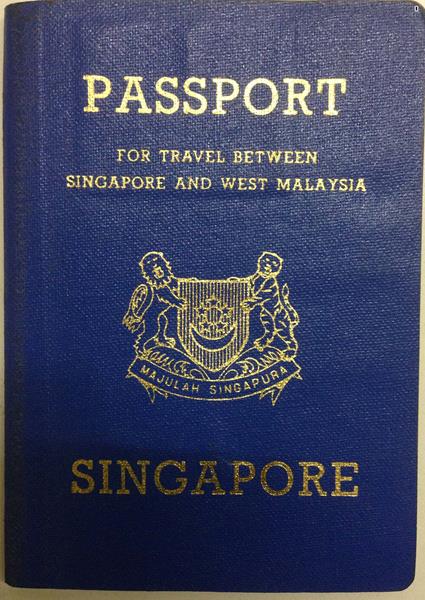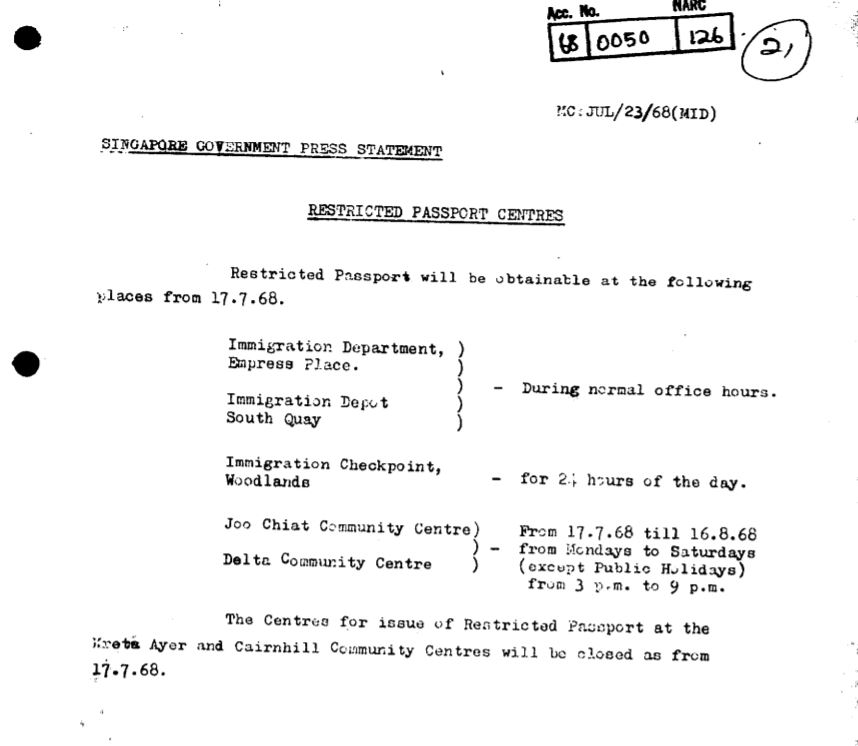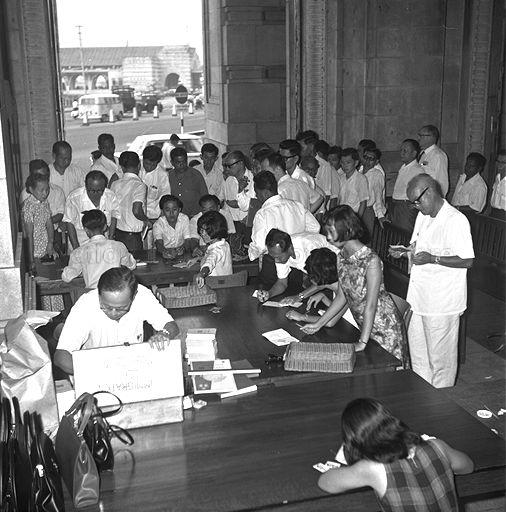The Singapore passport is currently one of the most powerful in the world, and many of us have come to appreciate the privileges tied to our red Singapore passport.
While we only hold one Singapore passport today, there was actually a time when some Singaporeans held two passports. #legit
A tale of two passports
After Singapore separated from Malaysia, the Singapore passport came into being.
And Singapore's independence from Malaysia didn't mean that people's relational and business ties spanning both countries were automatically cut off altogether.
So, many Singaporeans continued to travel across the Causeway for business, work, pleasure, or to visit friends and family.
In order to facilitate Singaporeans' travel to West Malaysia, the blue-coloured Singapore Restricted Passport (SRP) was issued from July 1, 1967.
 Photo from Singapore Memory Project
Photo from Singapore Memory Project
Hence, some Singaporeans would have two passports - the SRP just for travel to West Malaysia, and the other for international travel.
[related_story]
By the way, Malaysians too had their own special passport for travelling to Singapore:
 Photo from Paper to travel
Photo from Paper to travel
Anyway, according to this press statement released by the Singapore government in 1968, SRPs could be obtained at several locations:
 Screenshot from NAS
Screenshot from NAS
And of course, those who applied for the passport had to brave the queues to collect them. Here's a photo of people queuing to collect their SRPs in the 1960s:
 Photo from NAS
Photo from NAS
The issuance of the SRP ceased in 1999 due to the lack of demand. The next year, on January 1, 2000, the red Singapore passport became the only valid document for travel out of Singapore.
[caption id="" align="aligncenter" width="486"] Source: Wikipedia[/caption]
Source: Wikipedia[/caption]
Top image collage from Map Library & Singapore Memory Project.
1819 is a labour of love by Mothership.sg where we tell stories from Singapore’s history, heritage & culture. Follow us on Facebook, Instagram and Twitter!
[related_story]
If you like what you read, follow us on Facebook, Instagram, Twitter and Telegram to get the latest updates.
